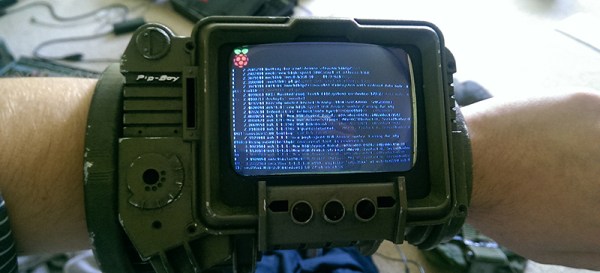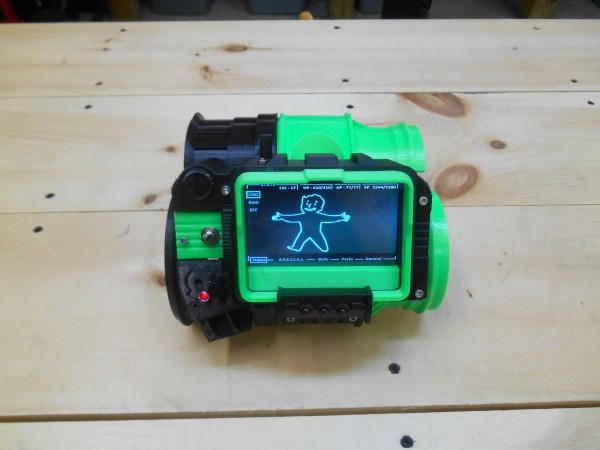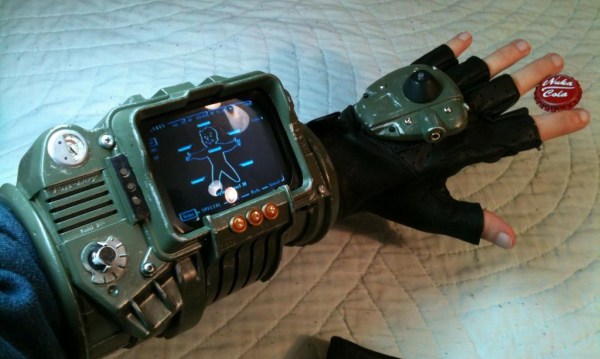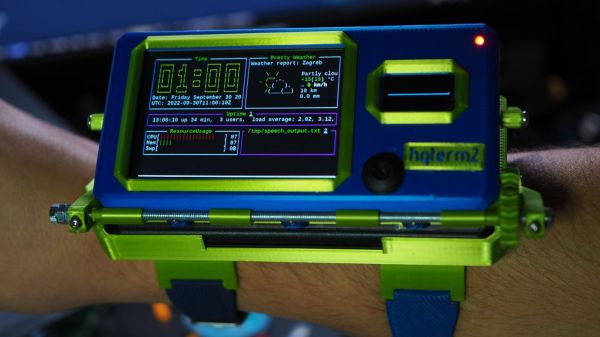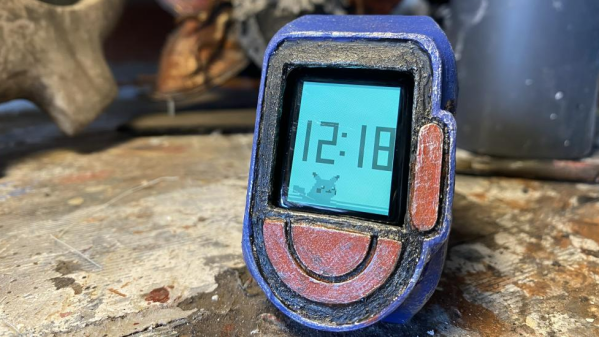You heard that we’re shutting down Hackaday on November 11, 2015, right? That’s the release of Fallout 4, and trust me: I’m not getting anything done that day. A new game in the Fallout series means more power armor cosplay builds, and hundreds of different wearable electronics from the friendly folks at Vault-Tec. I speak of the PipBoy, the wrist-mounted computer of the Fallout series, and [THEMCV] built the first one we’ll see this year. It won’t be the last.
The PipBoy [THEMCV] created is the 3000a model, the same one found in Fallout 3 and New Vegas. We’ve seen a few real-live versions of the PipBoy before; this one used the PipBoy prop that came with the Amazon exclusive special edition of Fallout 3. Things have changed in the years since the release of Fallout 3, and to build his PipBoy, [THEMCV] just bought one from Shapeways.
The electronics consist of a Raspberry Pi Model A, 3.5″ LCD, a battery pack, and a great piece of software to emulate the software of the PipBoy 3000. It looks great, but [THEMCV] still needs to find a few retrofuturistic buttons and dials to complete the PipBoy experience.
Video below.

